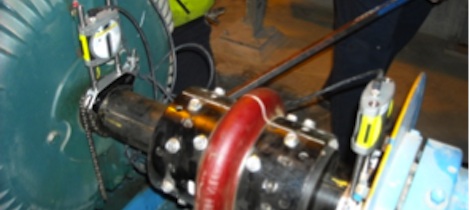One of the most frustrating, expensive, and time consuming parts of shaft alignment is dealing with a Base Bound or Bolt Bound (BBBB) condition. One or both of these conditions are present in a sizeable population of industrial machines. And while these can be difficult, there are many options that can be used to correct these conditions, allowing the technician to perform a quality shaft alignment.
The definitions for Base Bound and Bolt Bound are:
|
 |
|
|
Maintenance personnel use many methods to attempt to correct these problems, such as:
Base Bound
|
Bolt Bound
|
While any of these methods can be employed, some require extensive manpower and down time. They may also make the motor unsuitable for other installations, by changing the NEMA-rated height or bolt-hole diameter of the motor. But there are alternatives that require much less work, are less expensive, and will not cause the machinery to be out of specification. Stay tuned!
For more information, visit www.vibralign.com






Comments